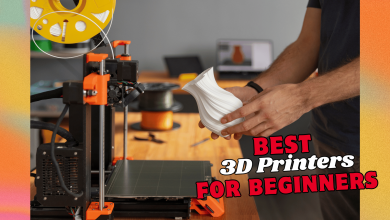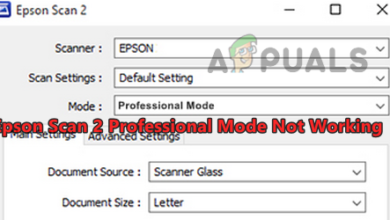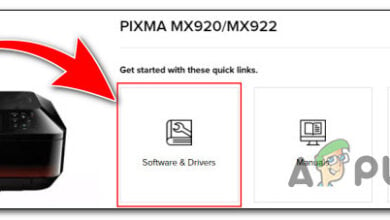Which is Better: Inkjet or Laser Printer?
- Inkjet printers excel in high-quality color printing, making them ideal for photos and images but require frequent ink replacements.
- Laser printers are better suited for high-volume, text-heavy documents, offering faster printing speeds and lower long-term costs.
- Choose based on needs—inkjet for versatile, vibrant prints and laser for durability, speed, and cost efficiency in office settings.
Just as a Polaroid camera isn’t suited for professional wedding shoots but excels at capturing true moments, in the world of printing, the two printer types—inkjet and laser—excel in their respective use cases, and one cannot overshadow the other as the best option for everyone. But there certainly can be a better choice for you! How would you know which one? By learning about both, of course!

Table of Contents:
How Do Printers Work?
With advancements in technology and increased resource availability, printers that were once exclusive to specific groups are now accessible to a broader audience. However, affordability in no way equals a compromise in quality, all thanks to the wide range of printer options available today.
At the basic level, all printers transfer minuscule dots onto a sheet of paper to replicate images and text documents. This is done by sending electronic signals from the computer to the printer’s control board, which interprets them into instructions suitable for the specific printing technology used. And that’s exactly what differentiates the various printer types from one another.
While there are various printing technologies available today, the two most common ones are inkjet and laser. Funny enough, the difference between the two is what remains a mystery for many.
READ MORE: How to Setup and Configure a Wireless Printer in Windows 11 ➜
What is an Inkjet Printer?

The mechanism of an inkjet printer is hinted at by its name. But for those who want a bit more explanation, this type of printer produces text and images by spraying liquid ink droplets onto paper. It uses ink cartridges that come in separate colors or combined into a single unit. These cartridges have one or more nozzles that dispense ink in precise patterns, producing the desired output.
But what does that say about inkjet printers’ applications, you ask? Well, due to their ability to produce vivid colors and fine details, these high-quality prints make them popular for personal/home use and even some areas of commercial printing.
What is a Laser Printer?

Laser printers, on the other hand, use electrical currents and toner (fine solid particles of powder) to produce images and text on paper.
The laser beam is targeted at a light-sensitive rotating drum to create charged particles (an electrostatic image) that attract the toner dust. This toner is then transferred to a sheet of paper, which passes through a set of heated rollers called a fuser. This helps bond the toner particles to the paper, resulting in a permanent print.
This is what makes laser printers ideal for office and business use. They’re also larger than inkjet printers and capable of printing high volumes at a faster speed. What’s more? Considering their target audience, they also come with optional trays and advanced security features.
READ MORE: What Are the Best Types of Paper for Printing in 2024? ➜
Inkjet vs. Laser Printer: Pros & Cons
While the fundamental difference between the two printer types lies in their printing mechanism, one cannot ignore how the prints come out to be, leading to distinctions in quality, performance, and overall cost.
In terms of quality, both printers have areas in which one excels the other. Inkjet is particularly useful for image printing and color reproduction because of the use of ink cartridges and laser for text-based documents ideal for high-volume environments. But wait, there’s more to the debate!
1. Paper Compatibility
Inkjet printers are capable of printing on numerous paper types, so they can produce glossy photographs, matte prints for framing, or even prints on non-traditional materials like vinyl or plastic.

On the other hand, laser printers don’t work well with many options, which limits their applications beyond those requiring standard printer paper, especially because heat-sensitive paper won’t work with the heat rollers.
2. Timing
Though laser printers are known for quick batch printing, they do, however, take time to warm up before getting started, something that inkjet printers do not require. In terms of printing, inkjet printers do take a little extra time, but they are lighter and more compact, making them easy to fit into cramped settings or limited space desks.
3. Cost
There’s a price at purchase and a price you pay in the long run. Laser printers have a higher initial cost, however, they rely on toner rather than ink cartridges, which takes longer to use up.
Contrarily, ink cartridges get used up quickly and require either a replacement or a refill (if you want to go green). In fact, they may even dry out if there’s an extended gap between printing jobs, rendering them unusable. However, between ink and toner cartridges, the replacement is easier and cheaper for the former than the latter.

4. Durability
One thing’s for sure, laser printers outperform when it comes to text-based documents, and inkjet printers when it comes to graphics and image printing. Of course, both printers can print anything you want, but each has its strong suit.
Inkjet printers blend colors seamlessly, producing sharp, clear pictures but slightly fuzzy text. Conversely, laser printers deliver crisp, bold, and well-defined lettering, but they’re not ideal for printing-colored photos.
Moreover, since laser printers use fusers for binding, their prints are more durable. Then again, ink cartridges are water-based, so printed images may fade and have a higher chance of being damaged when exposed to moisture.
READ MORE: Ultimate Guide to Designing and Printing Your Own T-Shirt at Home ➜
Which One Should You Use?
Asking a cashier to do your taxes or a chef to work on your car sounds pretty silly, right? Well, so does expecting a laser printer to handle photographs and an inkjet printer to manage reports and bulk documents. Each product is designed with specific strengths, even though they may perform multiple tasks.
When choosing a printer, consider factors such as speed, efficiency, affordability, and the desired output. Inkjet printers offer high-quality prints, are affordable, compact, and compatible with various paper types, but they require more frequent ink replacements.
Whereas, laser printers, though pricier, excel in printing clear office documents with greater print yields and lower running costs. Ultimately, the best choice depends on your specific needs and usage patterns.
FAQs
Printer durability depends on usage frequency and the length of printing jobs. Because laser printers are known for frequent batch printing, they’re made of robust components designed for durability. And due to their reliance on toner rather than liquid ink, they don’t experience issues with ink drying or clogging, thus requiring less frequent maintenance and extending their operational lifespan. However, it cannot be said that an inkjet printer, if used with proper care and not overburdened, cannot last just as long, if not longer.
Although laser printers are popular for printing black and white documents with excellence, they absolutely can produce a range of colors and thus deliver color prints, although their quality is not the very best to rely upon.
Printing professional photo prints is better with inkjet printers as they support higher GSM (grams per square meter) paper and produce better color reproduction. Laser printers, on the other hand, do not offer as much color accuracy and detail, which is needed for high-quality, vibrant printed images.





